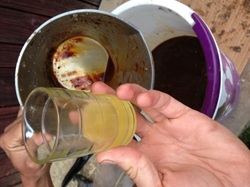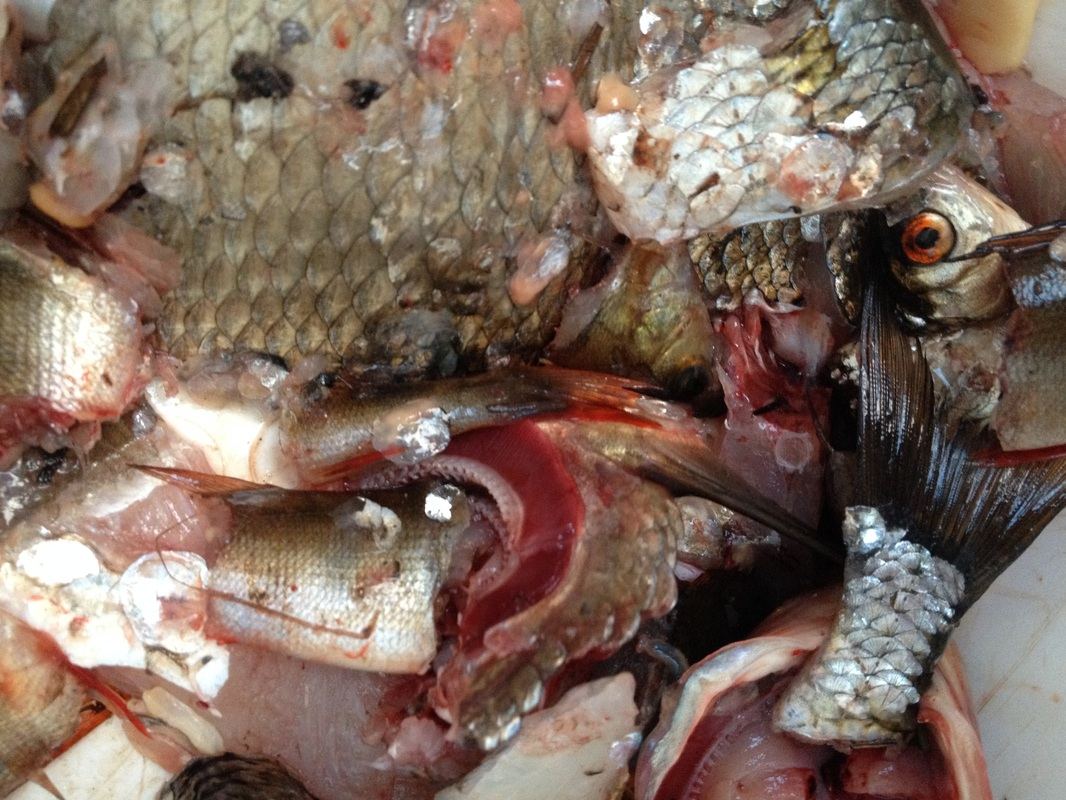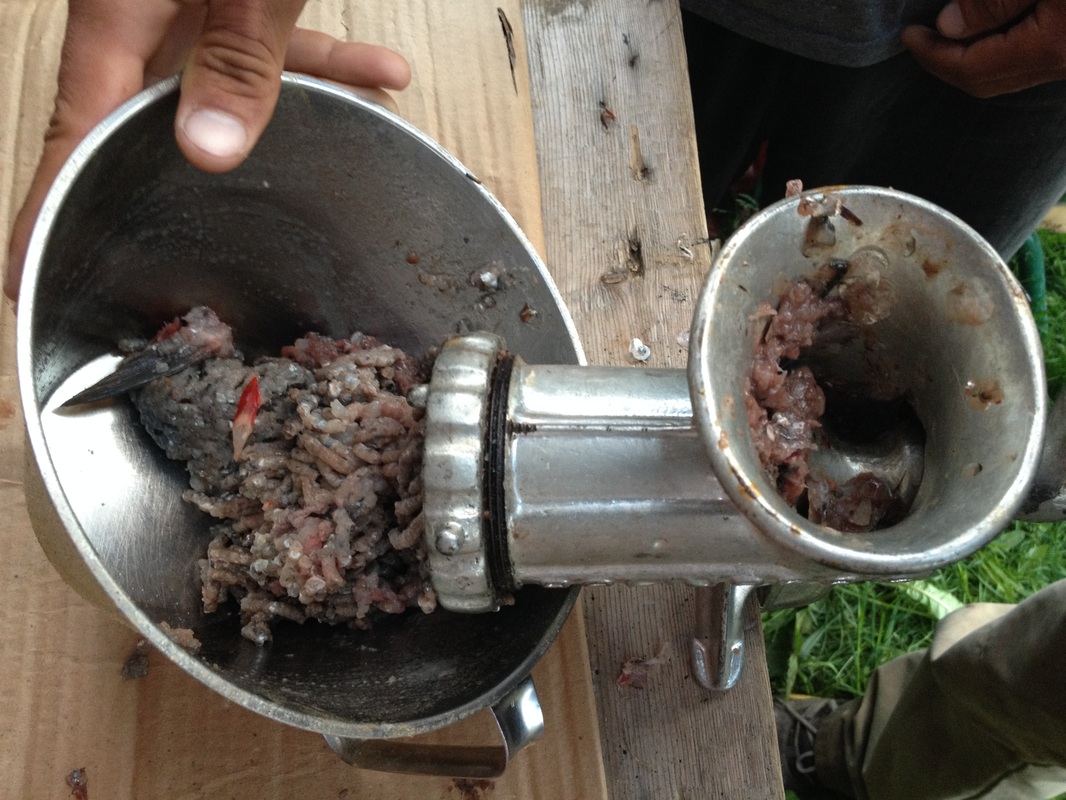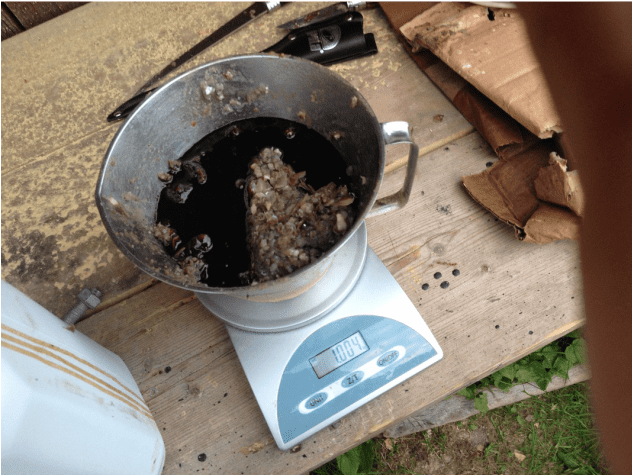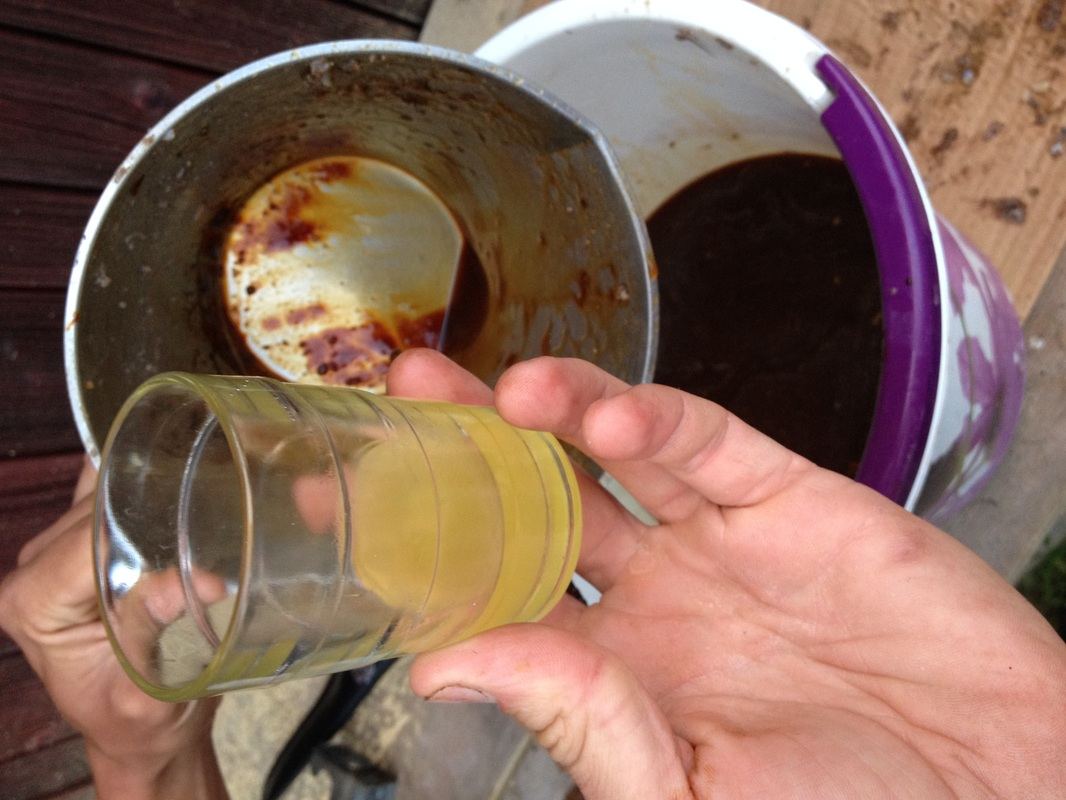Fish hydrolysate is an awesome product for promoting plant growth. It’s high in Nitrogen, can be naturally produced, and is an awesome food for microbes. Fungi love it and it is easily produced at home. We use it as straight fertiliser, animal supplement and an ingredient in compost teas (Fungi: Bacteria balanced- Fungi orientated).
Fish hydrolysate is composed of fish and glucose based sugars and uses
lacto bacillus to break everything down using enzymes. Fish hydryolysate doesn’t undergo the heating and skimming process that you get with fish emulsion products. Heating breaks down beneficial amino acid chains and this cold process also retains the fats and oils that microbes love.
How to make it;
1. Get some fish, you might as well use fish discards like fish heads, guts, etc. We use whole fish as there are naturally wider range of nutrients present.
2. Cut fish into chunks then either blend or run through a meat mincer. The finer the fish bits, the more effective the fermentation.
Cut fish into chunks
Blend or mince fish
3. Add water. We're adding 3 parts water to 1 part ferment material. (1litre fish mince: 3 litre water) ALWAYS USE NON-CHLORINATED WATER. Chlorine kills microbes.
Add sugars 3:1: here 750g fish:250g Sugarcane Molasses
4. Add 3:1 Fish: Sugar. Sugarcane molasses or Raw (unrefined/ unbleached) sugar is good.
5. Add
lacto bacilli to blended fish mixture. Approx. 2tbsp per L. We used liquid from a Lacto ferment, eg, Kimchi/ Sauerkraut.
6. Now you have liquefied fish, sugar, and lacto. Pour this mixture into a container to ferment. Cover with a cloth/ mesh to stop insects, etc. The process takes anywhere from 2 weeks to over a month. You know its finished by the smell. During fermentation there is a pungent smell, but once completed there should be little more than a faint vinegar smell.
7. Transfer it to a smaller container.
How to use;
Mix 0.5tbsp/litre for applications.
Plants
· Use as a soil drench as opposed to foliar spray.
· Inoculate compost to boost fungal population.
· Use in compost teas to boost fungal growth, add Nitrogen. Use at ¼ strength for this application
· Mix in water when watering plants, as a natural fish fertilizer and to enhance populations of micro-organisms in the soil
Animals
· Mix with water for an effective protein/lacto boost for your animals. They'll love or hate it
Lacto bacillus going into the mix...



